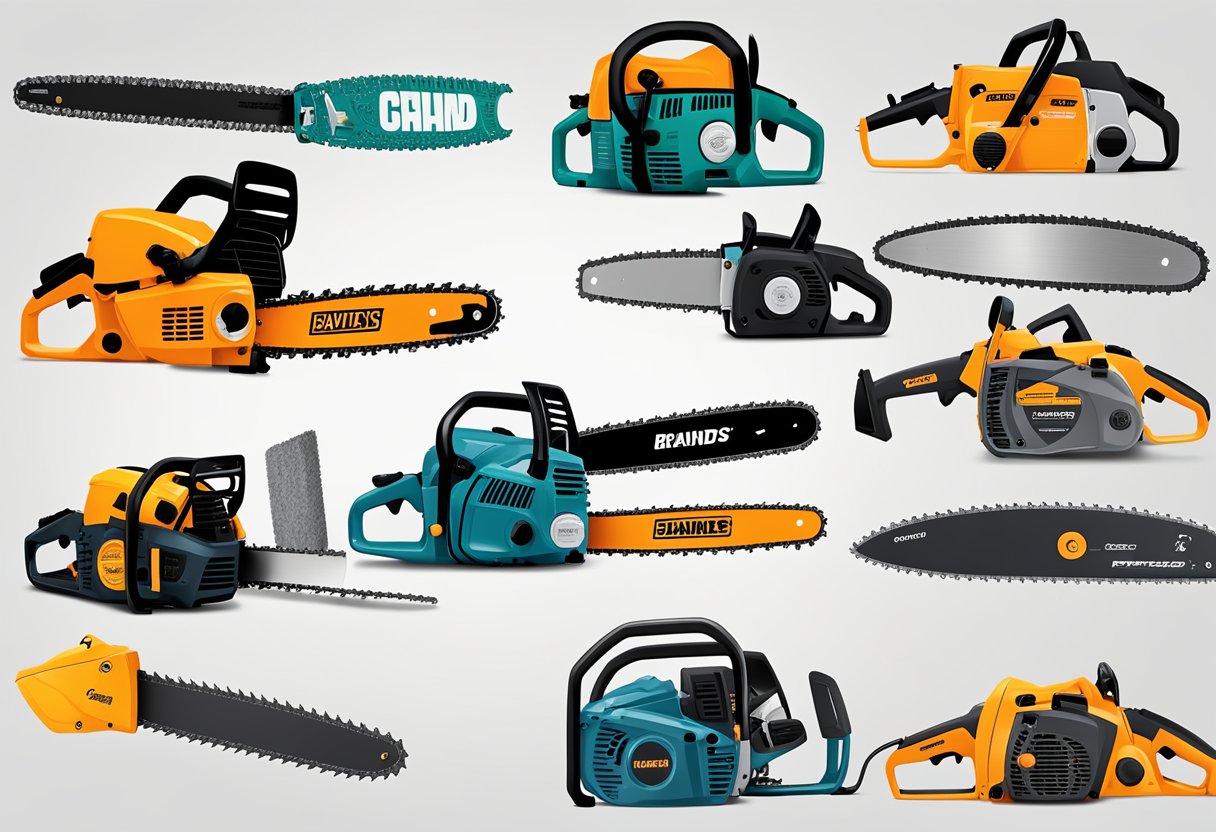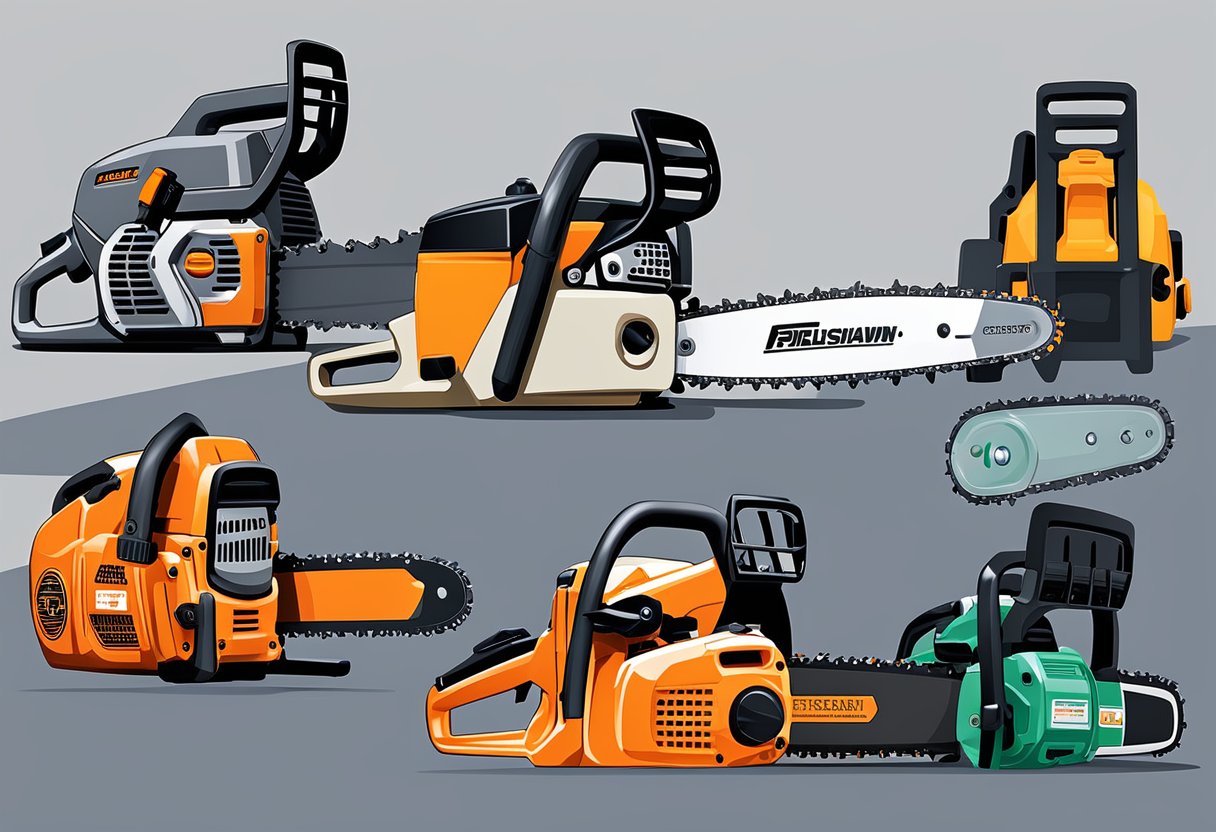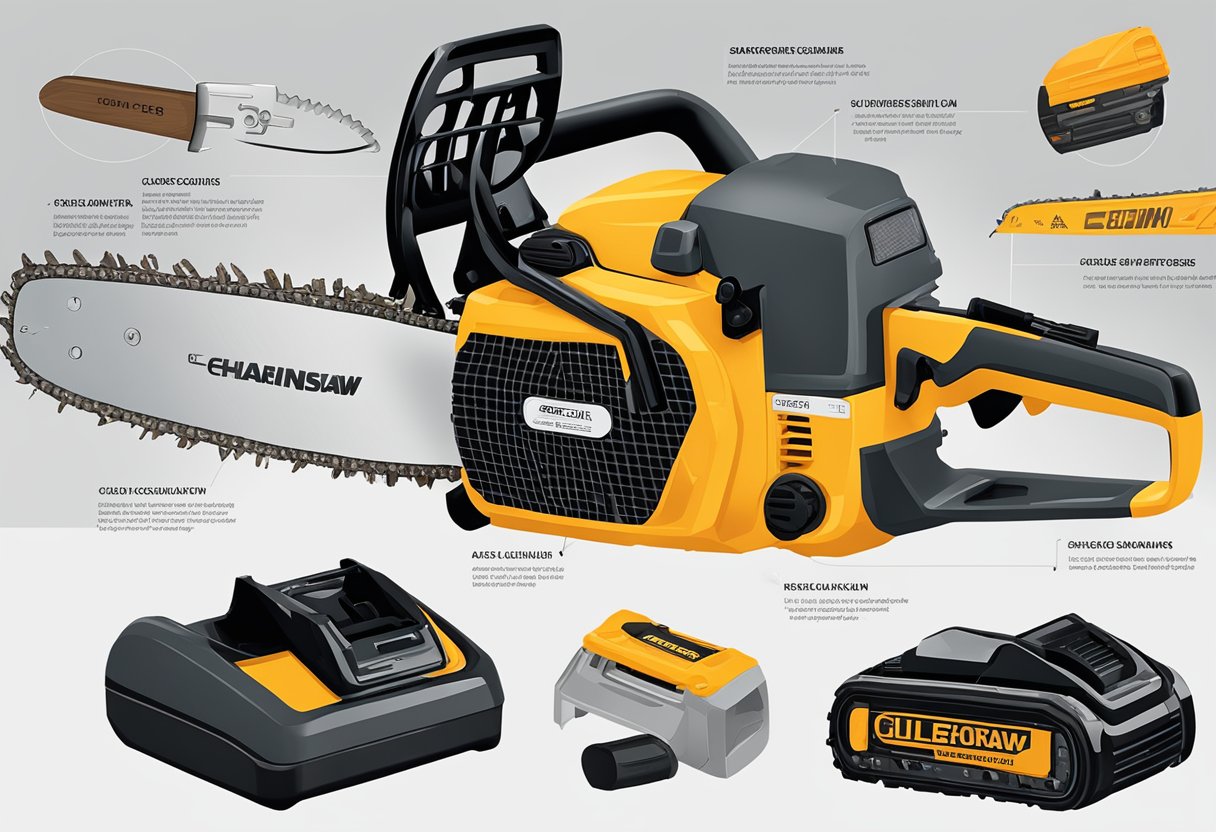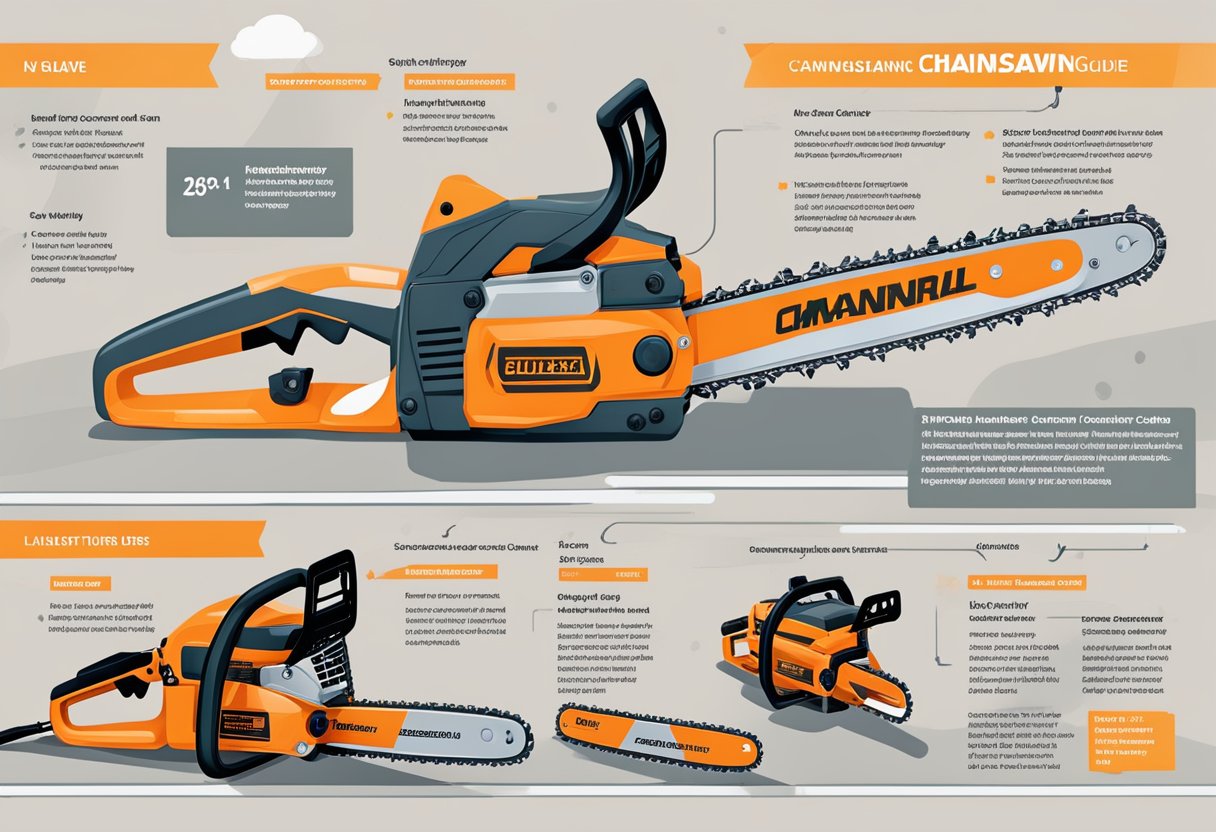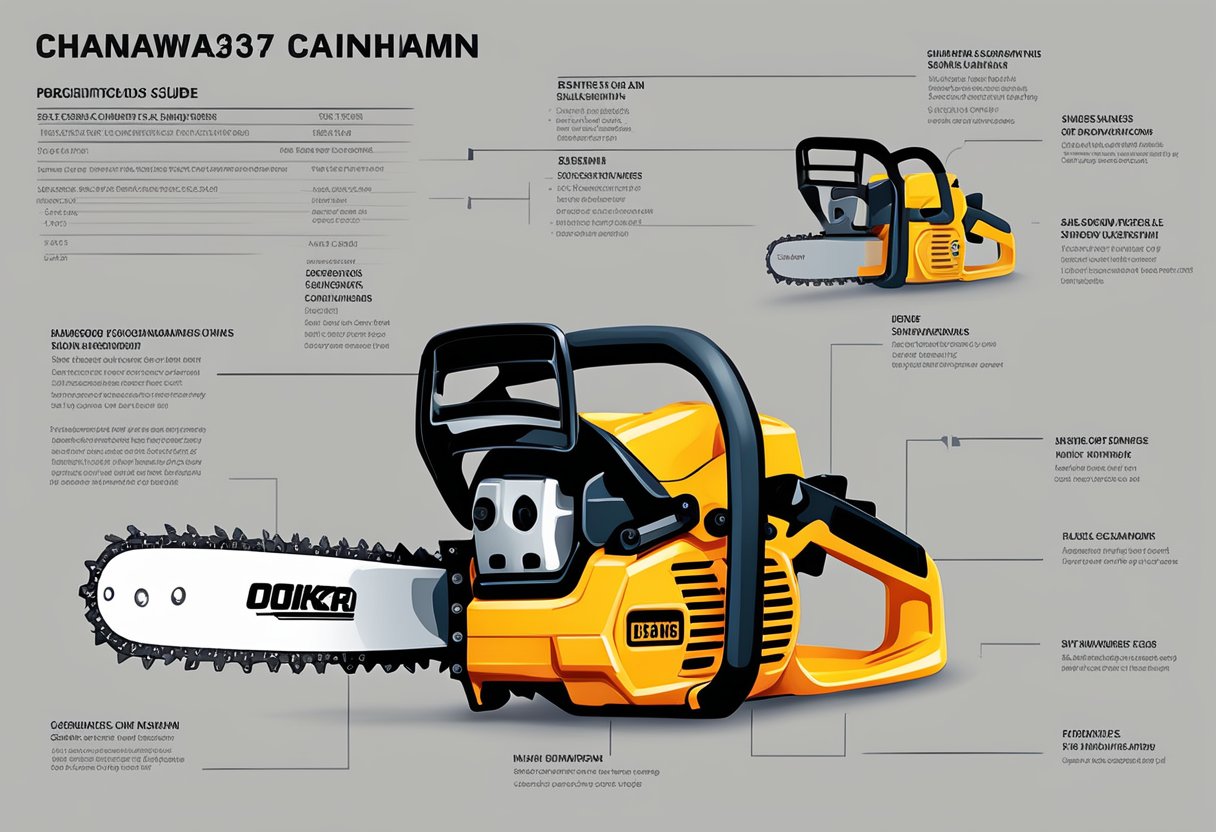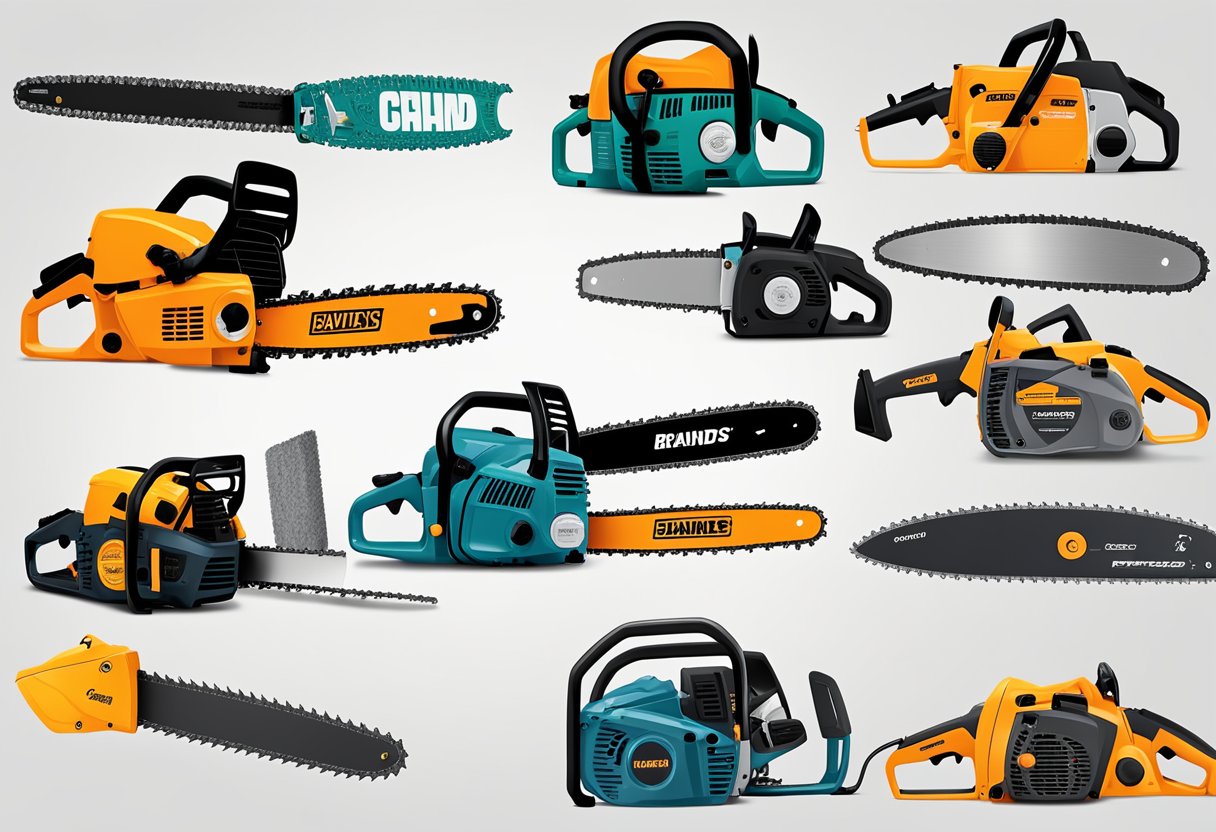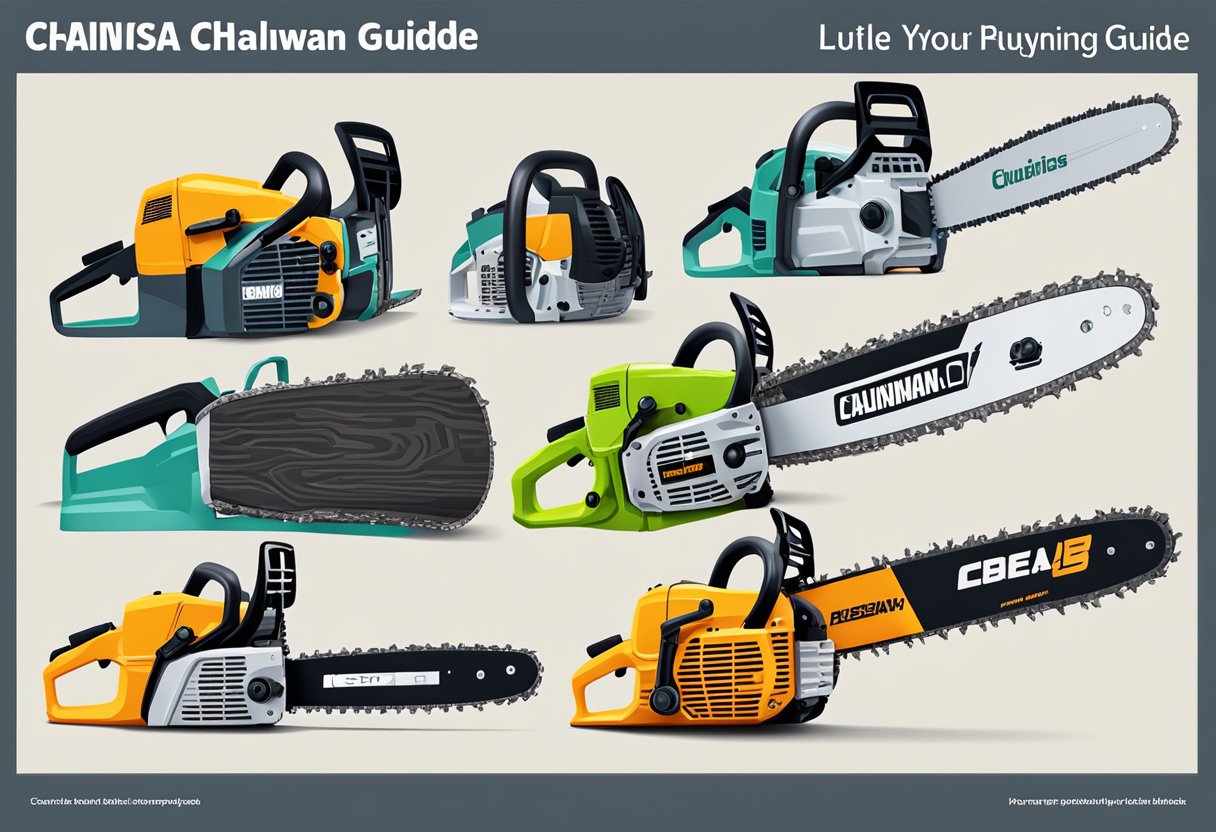Choosing the Right Chainsaw: A Comprehensive Buyers Guide for Smart Choices
Choosing the right chainsaw can be a daunting task, especially with the plethora of options available in the market. Chainsaws are powerful tools that come in various sizes, types, and features, designed for different tasks and user requirements. Whether you’re a homeowner in need of a chainsaw for occasional tasks, or a professional landscaper managing large properties, understanding the various factors to consider when purchasing a chainsaw is crucial in making an informed decision.
To help you navigate the world of chainsaws, this comprehensive buyer’s guide will walk you through all the essential aspects you need to keep in mind. From understanding the different power sources and types of chainsaws to exploring key features, sizes, and uses, this guide has got you covered. We will also delve into factors like comfort, safety, maintenance, performance, cost considerations, and top chainsaw brands to ensure you make the best choice for your needs.
Key Takeaways
- Different chainsaw types and power sources cater to varying user requirements and tasks.
- Comfort, safety, and maintenance should be considered alongside size and features when selecting a chainsaw.
- Top chainsaw brands and cost considerations play a role in making an informed buying decision.
Understanding Chainsaws
Chainsaws are versatile and powerful tools used for various tasks, such as tree felling, limbing, pruning, and cutting firewood. Understanding the different types of chainsaws, their features, and safety considerations will help you choose the right chainsaw for your needs.
There are three main types of chainsaws: gas-powered, electric (corded), and battery-powered (cordless). Gas-powered chainsaws are known for their power and are great for heavy-duty jobs. However, they are also heavier, louder, and require more maintenance compared to electric chainsaws. Electric chainsaws are quieter and exhaust-free, with corded models offering continuous power without the need to replace or recharge a battery. Battery-powered chainsaws provide more portability but may have less power than their gas-powered counterparts.
When selecting a chainsaw, consider the various features available such as bar length, power-to-weight ratio, and handle configuration. The bar length determines the size of the material that can be cut, with longer bars suitable for larger trees and branches. The power-to-weight ratio is important for maneuverability, with a higher ratio indicating better performance. Chainsaws can have either rear or top handles. Rear handles are more common and suitable for most tasks, whereas top-handle chainsaws are designed for professionals working at heights, like arborists.
Safety is a crucial aspect of using chainsaws. Chainsaw safety features include a chain brake, which stops the chain immediately in case of a kickback, and anti-vibration systems that reduce fatigue and the risk of injury from long-term use. To further enhance safety, users should wear protective gear such as gloves, safety goggles, hearing protection, and chainsaw chaps.
By understanding the different types of chainsaws, their features, and safety considerations, you’ll be able to make an informed decision and choose the right chainsaw for your specific needs and tasks.
Power Sources
When it comes to choosing the right chainsaw, one of the main decision factors is the power source. Chainsaws can be powered by electricity, gas, or batteries. Each type of chainsaw has its own advantages and disadvantages, and the best choice for you depends on your specific needs and preferences.
Electric Chainsaws
Electric chainsaws are environmentally friendly, as they don’t emit exhaust fumes like gas-powered counterparts. These chainsaws are generally lighter and quieter than gas-powered chainsaws, making them ideal for residential use. Since electric chainsaws lack an internal combustion engine, they require less maintenance, and starting them is as simple as pushing a button. There are two main types of electric chainsaws: battery-powered and corded.
Gas-Powered Chainsaws
Gas-powered chainsaws run on a mix of gasoline and oil, providing them with plenty of engine power. These chainsaws are known for their ability to tackle heavy-duty jobs, such as felling large trees or cutting through thick branches. However, gas chainsaws are typically louder, heavier and more challenging to maintain than their electric counterparts. It’s worth considering that they also emit exhaust fumes, which may not be suitable for those looking for an eco-friendly option.
Battery-Powered Chainsaws
Battery-powered chainsaws, also known as cordless chainsaws, offer the benefits of electric chainsaws with the added advantage of portability. These chainsaws run on rechargeable batteries, allowing users to work freely without worrying about power outlets or extension cords. Battery chainsaws are well suited for light to medium-duty tasks, such as trimming hedges or pruning small branches. However, battery life may be a concern, as usage time is limited by the capacity of the battery and may require recharging or swapping for a fully charged unit.
Corded Chainsaws
Corded electric chainsaws provide continuous power as long as they’re connected to an appropriate power outlet. These models require an extension cord, which may limit the range of cutting tasks you can perform. Nevertheless, corded chainsaws are believed to be generally slightly more powerful than battery-operated models. Ideal for light to medium-duty tasks, corded chainsaws consistently provide power without the need for refueling or recharging batteries.
In conclusion, understanding the benefits and limitations of each power source will help you decide the most appropriate chainsaw for your specific requirements. Consider factors such as mobility, environmental impact, and maintenance needs when making your decision.
Types of Chainsaws
There are various types of chainsaws, each designed to meet specific needs and applications. The two main categories are gas-powered and electric chainsaws.
Gas-powered chainsaws are known for their power and ability to handle heavy-duty tasks. These chainsaws can drive longer bar lengths, which means they can fell larger trees and work faster with less wear on the chain. However, they tend to be louder, heavier, and require more maintenance compared to electric models source. Gas-powered chainsaws are ideal for professional tree workers, landscapers, and landowners who need to clear large trees or cut logs frequently.
Electric chainsaws can be further divided into cordless and corded models. Cordless, or battery-powered, chainsaws offer portability and ease of use since they don’t require fuel or extension cords. However, the battery life can limit the working time, and you may need to replace or recharge batteries source. Corded electric chainsaws provide continuous power without the need for battery replacement, but you must have access to an electrical outlet, and the cord can restrict mobility. Electric chainsaws tend to be less powerful than gas saws but are often quieter, exhaust-free, and suitable for light to medium tasks such as trimming branches, pruning shrubs, and cutting firewood.
In addition to the power source, chainsaws come in various sizes and bar lengths, allowing you to find the perfect fit for your specific requirements. Smaller chainsaws with shorter bar lengths provide ease of use and maneuverability for precise cuts, while larger chainsaws with longer bar lengths can handle larger trees and heavier tasks source.
When choosing a chainsaw, consider factors such as power source, bar length, and the scope of work you intend to perform. By doing so, you can find the ideal chainsaw that meets your needs and ensures efficient and safe operation.
Key Features to Consider
When choosing the right chainsaw, it’s essential to take into consideration several key features that will make your tasks easier and more efficient. Here are some important factors to keep in mind while selecting the ideal chainsaw for your needs.
Power Source: Chainsaws come in three main types: gas-powered, electric (corded), and battery-powered (cordless). Gas chainsaws offer more power, but can be heavier and require more maintenance. Electric chainsaws are lightweight and low maintenance but need a power source nearby. Battery-powered chainsaws are portable but need battery replacements or recharging. Decide which type suits your needs best based on your intended use and work environment.
Blade Length: The blade length of a chainsaw determines its cutting capacity. Longer blades can handle thicker and larger trees or branches, while shorter blades may be more maneuverable and lighter. Consider the size of the material you will be cutting most often and choose an appropriate blade length.
Safety Features: Chainsaws can be dangerous tools if not used properly. Look for safety features such as chain brakes, low kickback chains, and anti-vibration systems. These will help to prevent accidents and decrease the risk of injury while using the chainsaw.
Weight and Handling: Handling a chainsaw for extended periods of time can be physically demanding. Choose a chainsaw with a comfortable weight and ergonomic design that will be easy to maneuver and control while in use.
Price: The cost of a chainsaw can vary greatly depending on the brand, type, and features available. Set a budget for yourself and consider the value each chainsaw offers within that price range.
Consider these factors carefully as you research different brands and models of chainsaws. It’s crucial to select a chainsaw that matches your specific needs and expectations to ensure the best experience and outcomes when working with this powerful tool.
Chainsaw Sizes and Uses
When selecting a chainsaw, it’s crucial to consider the size and intended purpose of the saw. One key factor to look at is the bar length. Bar length directly impacts the chainsaw’s capabilities and the type of work it can accommodate. The size of the guide bar also determines the maximum cutting diameter achievable with the chainsaw.
Chainsaws come in various bar lengths, ranging from short to long. Shorter bars are generally suitable for less demanding tasks, while longer bars can handle heavier workloads. Here are some common chainsaw sizes and their typical uses:
- Short Bars (6 to 14 inches): Ideal for tasks like pruning, trimming, or cutting small branches. These chainsaws are easy to maneuver and typically lighter, making them suitable for users with limited experience.
- Medium Bars (16 to 20 inches): Suitable for cutting firewood, limbing, and felling small to medium-sized trees. These chainsaws are versatile and well-suited for various tasks, making them popular among homeowners and seasoned chainsaw users.
- Long Bars (22 to 36 inches): Designed for heavy-duty tasks like logging, felling large trees, and milling lumber. These chainsaws are powerful and require more experience to operate safely. They are commonly used by professional arborists, tree service providers, and loggers.
Another type of chainsaw to consider is the pole saw. Pole saws are essentially chainsaws mounted on long poles, which enable users to reach high branches and perform tree pruning tasks more safely from the ground. They can be gas-powered, electric, or battery-operated, with many homeowners preferring corded models to keep the saw as light as possible.
In summary, choosing the right chainsaw size and type depends on the intended purpose and frequency of use. Short bars are suitable for light tasks like pruning and trimming, medium bars for firewood cutting and moderate felling, and long bars for heavy-duty logging and large tree felling. Additionally, pole saws are an excellent option for safely pruning high branches without using a ladder. Always prioritize safety, and select a chainsaw that matches your experience level and the tasks you plan to perform.
Choosing Based on Comfort and Safety
When selecting a chainsaw, comfort and safety should be prioritized. A chainsaw with a comfortable handle and ergonomic design can help minimize fatigue and reduce the risk of accidents during use. It is important to assess the weight of the chainsaw, as heavier models can cause strain and discomfort during extended use. Lighter models may be easier to maneuver, but it’s essential to ensure they still have the necessary power for the intended tasks.
Vibration is another factor to consider when looking for a comfortable chainsaw. Excessive vibration can lead to user fatigue and discomfort, affecting the precision and safety of cuts. Many chainsaws include anti-vibration features to dampen vibrations, providing a more comfortable experience and reducing strain on the user.
Safety features should not be overlooked when selecting a chainsaw. One of the most important safety features is the chain brake, designed to stop the chain immediately in case of kickback. Kickback occurs when the chainsaw’s nose suddenly comes into contact with an object, causing the chainsaw to be thrust back towards the user. A quick-acting chain brake can help prevent injuries caused by kickback.
In addition to chain brakes, many chainsaws are equipped with other safety features to minimize the risk of accidents. Some models have throttle triggers with built-in locks to prevent accidental throttle engagement. Others have chain catchers, designed to prevent the chain from flying off the guide bar if it breaks or derails.
Aside from the built-in safety features of the chainsaw, it is crucial to invest in personal protective equipment. When operating a chainsaw, make sure to wear a helmet with a face shield, ear protection, gloves, and cut-resistant pants or chaps to minimize the risk of injury.
By considering factors such as handle design, weight, vibration, and safety features, you can confidently choose a chainsaw that provides a comfortable and safe experience for both novice and experienced users.
Maintenance and Performance
Taking proper care of your chainsaw ensures its optimal performance and longevity. Regular maintenance not only helps prevent accidents but also keeps your tool running efficiently. Here are some essential aspects to consider when it comes to chainsaw maintenance and performance.
One crucial aspect of chainsaw maintenance is keeping the chain sharp. A dull chain can cause excessive strain on the engine, resulting in poor cutting performance and increased fuel consumption. To maintain a sharp chain, inspect it regularly for wear or damage and sharpen it as necessary.
Another critical component to maintain is the air filter. A dirty air filter can restrict airflow and, consequently, decrease the engine’s overall performance. Check the filter frequently and clean or replace it according to the manufacturer’s recommendations.
The spark plug also plays a vital role in a chainsaw’s performance. A worn or fouled spark plug can lead to reduced power, hard starting, and decreased fuel efficiency. It’s essential to inspect the spark plug regularly and replace it when necessary to maintain optimal performance.
In addition to these key components, it’s crucial to follow the manufacturer’s guidelines for general maintenance, including proper fuel and oil mixtures, chain tension, and lubrication. Regularly examining and servicing your chainsaw ensures smooth and efficient operation while keeping safety at the forefront.
Overall, taking care of your chainsaw through regular maintenance, proper storage, and timely servicing will help you enjoy its optimal performance and extend its lifespan. By being attentive to these maintenance and performance aspects, you can ensure your chainsaw remains a reliable and efficient tool for your cutting needs.
Cost Considerations
When selecting the right chainsaw, it is important to consider the cost as well. Chainsaws can range in price from $100 to $500 for homeowner use, while professional chainsaws can be even more expensive 1. The price generally depends on factors such as the chainsaw’s power source, blade length, and safety features. It is essential to prioritize your needs and choose a chainsaw that suits both your requirements and your budget.
For those on a more affordable budget, electric chainsaws can be a great option, with prices ranging from $180 to $330 2. These models may be less powerful than their gas counterparts, but they are often lighter and easier to maintain. Additionally, if you already own other battery-powered outdoor tools, it might be beneficial to choose a chainsaw from the same brand to utilize interchangeable batteries, making the purchase even more cost-effective.
When it comes to gas chainsaws, engine capacities can vary from 32cc to 60cc, with compatible bar lengths ranging from 12 to 24 inches 3. Generally, larger engine capacities and longer bars mean higher prices. To make the best decision, carefully evaluate the types of tasks you will be performing and select a chainsaw with sufficient power and blade length to complete those tasks efficiently.
Lastly, don’t forget to factor in the cost of maintenance and additional accessories such as chains, bars, and protective gear. These expenses can add up over time, so it is crucial to consider the long-term affordability of your chosen chainsaw.
Footnotes
Top Chainsaw Brands
One of the most important aspects of choosing the right chainsaw is selecting a brand that is known for its quality and performance. In this guide, we will discuss some of the top chainsaw brands available in the market today.
Stihl is a well-known and respected chainsaw brand that was founded in Germany in the 1920s by Andreas Stihl. They are famous for inventing the first electric chainsaw, which revolutionized forestry work. Today, Stihl chainsaws continue to be a popular choice among professional and homeowners alike, thanks to their durability, reliability, and performance. You can learn more about Stihl chainsaws in The Spruce’s Best Chainsaw Brands of 2023 article.
Another top chainsaw brand is Echo, which is known for its robust and high-quality chainsaws. Echo chainsaws are widely used across various industries and receive high ratings from Consumer Reports, making them a solid choice for any chainsaw user. For more information about Echo’s chainsaw models, check out Consumer Reports’ Best Chainsaws of 2023.
EGO is an innovative brand that specializes in producing cordless chainsaws. With their advanced battery technology, EGO chainsaws offer powerful performance, quick charging times, and impressive runtimes. They are an excellent option for those looking for an eco-friendly and convenient alternative to gas-powered chainsaws. You can find some of the best EGO chainsaw models on Consumer Reports’ list.
Last but not least, WORX is another noteworthy brand that provides reliable and budget-friendly chainsaw options. The WORX WG322 20V 10″ Cordless Chainsaw, for example, is a top pick for its portable power and hassle-free tensioning system. To know more about this model and others from WORX, visit BestOfMachinery’s Top Chainsaw Picks and Buying Guide.
In conclusion, when choosing a chainsaw, it is essential to consider the brand reputation and the specific chainsaw models they offer. By selecting a chainsaw from one of these top brands, you can confidently expect a high-quality, reliable, and efficient tool for your cutting needs.
Safety Considerations
When choosing a chainsaw, it is essential to consider the safety features included in the tool. Chainsaws are powerful machines, and improper use can lead to accidents and injuries. Ensuring that your chainsaw has essential safety components can make a huge difference in preventing accidents.
First, look for a chainsaw with a chain brake. This feature helps prevent kickback-related accidents by stopping the chain’s motion if the saw encounters sudden resistance or if the front portion of the chainsaw bar comes into contact with an object. A chain brake can be either manually engaged by the user or automatically activated in case of a sudden movement.
Another critical safety feature to look for is an anti-vibration system. Prolonged exposure to vibrations from a chainsaw can cause discomfort and even lead to a condition known as Hand-Arm Vibration Syndrome (HAVS). A chainsaw with an anti-vibration system reduces vibrations, making it more comfortable to use and minimizing the risk of HAVS source.
A low-kickback chain and bar is another essential safety feature. A low-kickback chain has additional safety elements like ramp-shaped depth gauges and narrow cutting corners that reduce the likelihood of kickback. A low-kickback bar also plays a vital role as its specialized design helps reduce the risk of kickback accidents.
Consider a chainsaw with a chain catcher, which is a device attached to the chainsaw body that catches a loose or derailed chain, preventing it from striking the user. This feature is especially important if you are new to using chainsaws or handling heavy-duty cutting tasks source.
Lastly, don’t forget about personal protective equipment (PPE) when operating a chainsaw. PPE includes items such as safety goggles, hearing protection, gloves, chaps, and a hard hat. Investing in proper PPE not only helps in ensuring your safety but also increases your confidence and comfort while using the chainsaw.
By taking these safety considerations into account, you can confidently choose a chainsaw that will help you work efficiently, while also keeping you and those around you safe.
Buying Guide and Final Thoughts
When it comes to purchasing a chainsaw, there are several factors to consider. One of the first aspects to think about is the intended use of the chainsaw, as different models are better suited for specific tasks. If it’s for professional use, larger and more powerful gas-powered chainsaws may be the best option. However, for occasional use, such as trimming branches or cutting small trees, an electric chainsaw may provide the ease of use and quiet operation desired.
Another crucial factor in buying a chainsaw is the experience level of the user. If someone is new to using chainsaws, they might be better off with a lightweight model that features automatic chain tensioning and tool-free adjustments. On the contrary, experienced users may prefer a chainsaw with customizable settings and the ability to handle heavy-duty tasks.
Some essential chainsaw features that should be considered include:
- Power source: Gas-powered chainsaws provide more power for heavy-duty tasks but require more maintenance. On the other hand, electric chainsaws are quieter and easier to handle, with options for corded or battery-powered models.
- Bar length: Choosing the right bar length depends on the size of the trees or branches you will be cutting. Longer bars are suitable for larger trees, while shorter bars are ideal for smaller jobs and more maneuverability.
- Chain speed: A faster chain speed will result in quicker cuts, but it might also increase the chance of kickback.
Safety features should also be taken into account when choosing the right chainsaw. Some models come with a chain brake that stops the chain from moving in the event of a kickback, providing added protection to the user. Anti-vibration features can also help to minimize fatigue during longer cutting tasks.
When making a decision to buy a chainsaw, it’s essential to analyze the user’s experience, intended use, and desired features before making the final choice. By taking these factors into account, one can confidently select the most suitable chainsaw for their needs.
Environmental Impact
When choosing a chainsaw, it is essential to consider its environmental impact. Chainsaws are generally powered by either gasoline or electricity. Gasoline-powered chainsaws emit harmful pollutants into the atmosphere, contributing to air pollution and other environmental issues. On the other hand, electric chainsaws produce zero emissions during operation, making them a more eco-friendly option.
One significant advantage of electric chainsaws is their use of rechargeable batteries or a direct connection to the power grid. This feature eliminates the need for gasoline and oil, reducing the risk of spills and contamination. In addition, electric chainsaws tend to run much quieter than their gasoline counterparts, contributing to noise pollution reduction.
However, it is essential to consider the energy source that powers electric chainsaws when evaluating their environmental impact. If the electricity comes from renewable sources such as solar or wind, the overall environmental footprint is much lower. In contrast, if the power is derived from fossil fuels like coal or natural gas, the chainsaw’s environmental benefits are reduced.
Furthermore, it is essential to maintain and operate your chainsaw responsibly, regardless of its power source. Proper maintenance ensures efficient operation, reducing energy consumption and prolonging the life of the device. Additionally, be sure to recycle used batteries and dispose of waste oil and gasoline responsibly to minimize their impact on the environment.
In summary, electric chainsaws offer a more eco-friendly option for those concerned about minimizing their environmental footprint. Be mindful of the energy source powering your electric chainsaw and follow proper maintenance guidelines to ensure an environmentally responsible chainsaw experience.
Frequently Asked Questions
What factors should I consider when purchasing a chainsaw?
When purchasing a chainsaw, you should consider your specific needs, such as the type of work you will be doing, whether it’s tree felling, limbing, pruning, or other tasks. It’s also important to consider your budget, the power source (gas, electric, or battery-powered), and the size and cutting capacity of the chainsaw. Additionally, look for safety features and the reputation of the chainsaw brand.
How do gas, electric, and battery-powered chainsaws differ?
Gas chainsaws are generally more powerful and heavier, making them suitable for heavy-duty tasks. However, they require more maintenance and produce emissions. Electric chainsaws provide continuous power and are quieter, but they require an electrical outlet, limiting their portability. Battery-powered chainsaws are portable and produce less noise but may have less power than gas models and require frequent recharging.
Which chainsaw brands are known for their reliability and performance?
Some reputable chainsaw brands include Husqvarna, Stihl, Echo, and Oregon. These brands have been recognized for their reliability, performance, and quality. However, it’s essential to research and read customer reviews to find the chainsaw that best suits your unique needs.
What size chainsaw is suitable for all-around use?
A chainsaw with a bar length of 16 to 18 inches is generally considered suitable for all-around use, including trimming, pruning, and cutting small to medium-sized trees. This size provides a good balance of power and maneuverability.
How do I determine the optimal power and cutting capacity for my needs?
Determine the optimal power and cutting capacity by considering the type and size of the materials you will be cutting. For example, softer woods and smaller branches require less power and cutting capacity, while large, hardwood trees need more power and a longer bar length. If you’re unsure which chainsaw is right for you, consulting an expert or reading buying guides can help you make an informed decision.
What safety features should I look for in a chainsaw?
Some essential safety features to look for in a chainsaw include a chain brake, which stops the chain movement in case of kickback, an anti-vibration system to reduce fatigue during prolonged use, and a safety switch to prevent accidental startups. Additionally, wearing appropriate safety gear, such as gloves, goggles, and helmets, can further ensure your safety while using a chainsaw.
Conclusion
In order to choose the right chainsaw suitable for your specific needs, several factors must be taken into consideration. Each type of chainsaw presents various advantages and disadvantages based on the intended use and personal preferences.
One primary aspect to evaluate is the power source. Gas-powered chainsaws are typically more powerful and suited for heavy-duty jobs while electric chainsaws offer quieter operation, exhaust-free experience, and either corded or battery-operated options. Corded electric chainsaws provide continuous power whereas battery-operated ones offer mobility.
Another significant factor is the intended use of the chainsaw. Assess the type of cutting tasks required, including the size and hardness of the wood. This information will help determine the necessary bar length and chain type. It is essential to select a chainsaw with the appropriate size and specifications to ensure optimal performance and prevent any potential safety hazards.
Safety features are also a critical aspect to consider. Look for chainsaws with safety components such as chain brakes, anti-vibration systems, and ergonomic handles. These features will not only make the chainsaw safer to operate but also more comfortable to use over extended periods.
Lastly, do not overlook the maintenance aspect. Chainsaws require regular maintenance including chain sharpening, oiling, and filter cleaning. Gas-powered chainsaws often demand more maintenance than electric ones. Consider the maintenance requirements and ensure you are willing to commit the time and resources needed to ensure the longevity of your chainsaw.
By carefully analyzing these factors, you can confidently select the ideal chainsaw that matches your requirements, ensuring maximum efficiency and safety in all your cutting projects.

